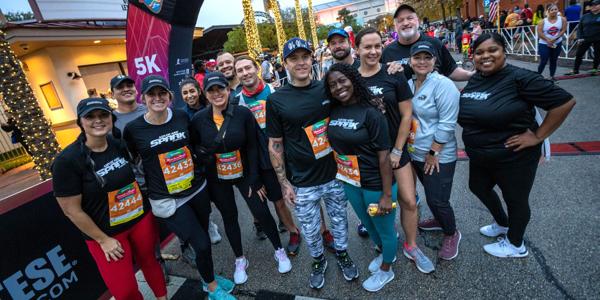Rock 'n' Roll Running Series
Long runs for the marathon are a staple of every training plan – no doubt about it. To prepare optimally for the marathon distance, it’s critical that you train for the specific demands of the race. If you want to record a new marathon PR, this means teaching your body how to run faster on tired legs, depleted fuel, and late into the race. To accomplish this, you can use a training concept called fast finish long runs.
What's the goal of a fast-finish long run? Mentally, the fast finish long runs simulate late-race fatigue and help train your body to push through the tiredness and pick up the pace, even when your legs are begging you to stop. When you get to that point in the marathon race, whether it be 18 miles or 22 miles, you’ll have the confidence from your fast finish long runs to push hard and keep increasing the effort.
Physiologically, you’re teaching your body how to burn fat more efficiently while running at marathon pace or faster. Late in the long run, and late in the race, you’ll be low on carbohydrates and your body will be looking for alternative fuel sources. By simulating this situation in training, your body can adapt and more efficiently switch to burning fat as its fuel source.
You should schedule a fast finish long run every second or third long run once you’ve established a good base mileage for your long run, usually 14-16 miles, but this number is different for every runner and is dependent upon your overall training plan.
An 18 mile fast finish long run might look something like this on your training schedule: 18 mile long run w/miles 13-16 at “x:xx” pace or faster. In this case, x:xx represents a pace that is between 10-15 seconds faster than goal marathon pace. For example, a 4-hour marathoner might look for a pace of around 8:55-9:00 minutes per mile as a starting pace.
So, the execution of the workout would look like:
Fast finish long runs, in combination with steady runs before the long run, help simulate late race fatigue while more specifically targeting the energy demands of the race compared to traditional long and slow runs. More importantly, fast finish long runs and surge long runs enable you to minimize injury risk while maximizing the benefits of each run.
Because fast finish long runs can be tiring and difficult, you shouldn’t include them on your training schedule every week. Sometimes, you need to relax and put time on your feet, especially while you build up your distance.
While discussion thus far has been focused specifically on the marathon, fast finish long runs have their place in 5k to half marathon training as well.
The mental and physiological adaptations produced by the workout are much the same for shorter distances as they are for the marathon. With any race distance, the ultimate goal is to train the body to finish the competition as fast as possible. Even for 10K or half marathon runners, running fast the last 1 or 2 miles of the race is a difficult task thanks to tired legs and low energy stores. By simulating that experience in training, you’ll be better prepared on race day to finish strong.





